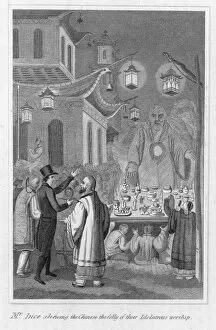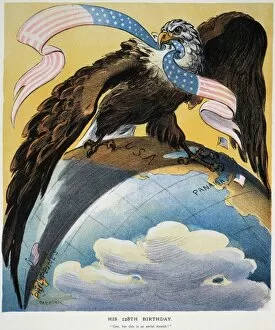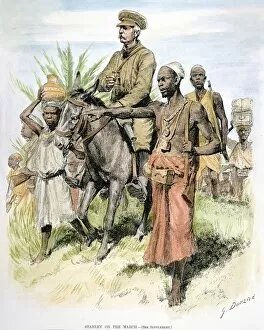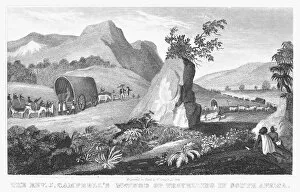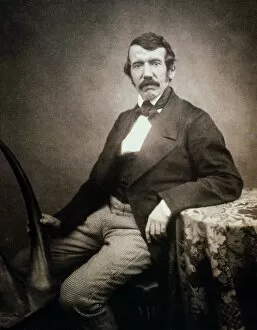White Mans Burden Collection
"The White Man's Burden: Unveiling the Missionary Zeal and Imperialistic Ambitions" In the 19th and early 20th centuries
All Professionally Made to Order for Quick Shipping
"The White Man's Burden: Unveiling the Missionary Zeal and Imperialistic Ambitions" In the 19th and early 20th centuries, a fervent belief in the superiority of Western civilization drove missionaries and imperialists to spread their influence across the globe. These historical images provide glimpses into this era, shedding light on both the noble intentions and questionable motives behind such endeavors. One engraving from 1837 captures a missionary in China, passionately attempting to enlighten locals about what he perceives as their misguided idolatrous worship. This portrayal reflects an underlying assumption that Western religions are superior to indigenous beliefs, fueling efforts to convert non-Christians. Another cartoon from 1897 depicts Uncle Sam patiently waiting for new territories like Cuba, Canada, Hawaii, and Central America to fall under American control. It exemplifies the expansionist mindset prevalent during this time when imperialism was seen as a means of spreading civilization or securing economic interests. A critical American cartoon by J. S. Pughe in 1896 highlights Spain's struggles with independence movements in Cuba and the Philippines. Here we see how imperial powers often exploited internal conflicts within other nations for their own gain while justifying it as bringing stability or progress. Joseph Keppler Jr. 's iconic 1904 cartoon portrays American imperialism through an eagle with its wings spread wide – stretching from Puerto Rico to the Philippines. It symbolizes America's growing desire for global dominance at that time. However, not all depictions were supportive of these actions. A lithograph cartoon by Louis Dalrymple in 1895 criticizes British and American missionary efforts aimed at converting Chinese people to Christianity. It questions whether imposing one's religious beliefs on others is truly beneficial or respectful of cultural diversity. Similarly, an American cartoon from 1882 raises doubts about British occupation troops' actions in Egypt while invoking religion by showing Queen Victoria praying alongside her family. It challenges the notion that imperialism can be justified in the name of Christianity.



